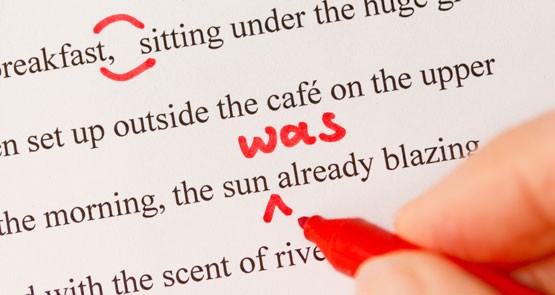
Pointing out errors in Fairfax’s papers is a common pastime of Crikey readers, who often email through their latest frustrations with the papers. We try to keep our teasing to a minimum; after all, everyone in the media these days is under the pump.
But an extraordinary leaked email doing the rounds with former subeditors explains, perhaps, why we see so many mistakes in the printed Fairfax papers.
The email, sent recently, comes from media services company Pagemasters. In February, Pagemasters was given the contract to subedit Fairfax’s metro papers after a 70-person redundancy round was announced at the New Zealand-based Fairfax Editorial Services, the in-house subediting hub.
According to that leaked email, the subeditors at Pagemasters assigned to deal with Fairfax’s mastheads have been warned they must get through 16 stories in four hours, or else.
It would be impossible to do this while giving stories the same careful attention a subeditor traditionally would. And, the memo says, that’s not what Fairfax is paying Pagemasters to do. An email signed by “TP”, whom Crikey has chosen not to name, says:
“Many of you are still subbing normally … few words here and there, green and yellow note marks decorating the copy. Forget it. I know it will come hard to those subs, like myself, who have been in this business for many years. You are now copy-fitting.
“When the story hits CQ [Fairfax’s content management system], as far as Fairfax is concerned, it is ready to print. We give it a (very) quick read, touch up any minor mistakes, pat it on the bum and get rid of it. In cyber [the program Fairfax uses to lay out newspaper pages], we assume the story is perfect, not to be changed … and, please, do not change ANYTHING without first getting approval unless it is glaring [sic] obvious.”
Part of the problem, the email says, is that most copy for The Sydney Morning Herald, The Age and Financial Review still arrives within a very narrow time window. “Copy flow is still appalling … 85% of copy arrives between 4pm and 7.30pm, a tiny window where we will be hit by an avalanche [of] more than 300-plus stories.”
To cope with this, the job needs to be confined to copy-fitting, i.e. taking out paragraphs or quotes until the story fits the space designated for it on the page — while still reading well — and then adding headlines and captions. Then it goes straight to being ready to publish, “because there will be no checking process”.
“We will have neither the numbers nor the time to check. So make sure you get the magic zero fit, double read heads and captions and let go.”
The situation, according to the email, is not exactly ideal:
“We WILL be reading pages throughout the night, but that’s the best I can do with the budget. It’s also what Fairfax is paying for … and all they want.”
We asked Pagemasters managing director Peter Atkinson if the email had really been sent, and if the company wanted to say anything about it. After a day of checking, Atkinson told Crikey:
“I will not comment on the message other than to say it does not reflect the agreement between Pagemasters and Fairfax Media, which is based upon the highest possible levels of service and editorial quality.”
A Fairfax spokesman said:
“The email is a total mischaracterisation and misrepresentation of our contractual arrangements with Pagemasters. We expect only the highest standards of service and editorial quality from Pagemasters.”
It’s worth noting that when Fairfax moved its subediting back to Pagemasters, Fairfax editorial director Sean Aylmer said the new arrangement was based “on a variable pricing model — a story and page rate — providing us additional flexibility and savings”. So not all Fairfax copy dealt with by Pagemasters is necessarily subbed under the same arrangements.
But while Atkinson dismissed the situation described in the email, it broadly accords with previous accounts of what happens at Pagemasters and other subediting “hubs” (centralised operations dealing with copy from many mastheads, as opposed to the traditional model of having subeditors embedded in newsrooms). In her 2013 book Stop Press, for example, former subeditor Rachel Buchanan describes working on 15 stories in two hours while at Fairfax’s New Zealand hub Fairfax Editorial Services. Despite working so hard, the team, she writes, was “missing deadlines”. “We were told to work on 30 stories per [eight-hour] shift.”
What’s extraordinary about the email, former Pagemasters subeditors told us, is its honesty. Despite the workloads at subediting hubs being far higher than those for subeditors working more traditionally, few could recall a time anyone had ever admitted in writing that there would be a reduction in the checking given to copy.
Fairfax’s digital-first publishing style means many of its stories go online before they ever reach a subeditor at Pagemasters. They’re still read over and checked before publication, Fairfax metro journos told us, though not exactly in the way a subeditor would do it. Instead, the job often falls on digital producers and section editors, who juggle this role with all their other responsibilities. Stories of particular importance or risk are closely read and checked by several editors before publication.








As a long-time journalist, it terrifies me how badly more stories are subbed these days. No matter how careful you are, there’s sometimes going to be errors in copy. And now the last line of defence – so important to safeguarding the very credibility we need to hold onto readers – is gone.
So it has finally come to this, once satirised, situation -the ‘news’ is now officially just filler around the ads.
And they will disappear as pissed off readers refuse to shell out daily for drivel.